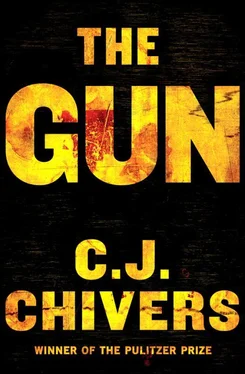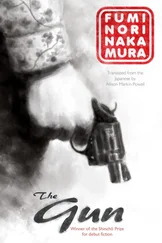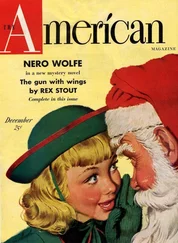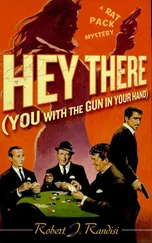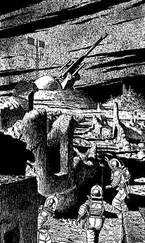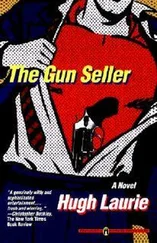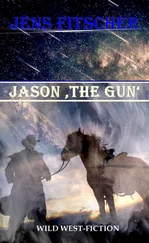The Army of the Soviet Union had given its new firearm a name: the AK-47. While Soviet physicists had been teasing out the secrets of the atom, the army’s Main Artillery Department had selected the AK-47 in a secret competition soon after the end of the Great Patriotic War, as the Soviet Union called their war against Hitler’s Germany. The acronym abbreviated two Russian words, Avtomat Kalashnikova , the automatic by Kalashnikov, a nod to Senior Sergeant Mikhail Timofeyevich Kalashnikov, a twenty-nine-year-old former tank commander to whom the army and the Communist Party formally attributed the weapon’s design. The number was shorthand for 1947, the year a technical bureau in Kovrov, a city east of Moscow with its own hidden arms plants, had finished the prototypes. In the time since, factories in Izhevsk had been tooled up to produce it. Within twenty-five years it would be the most abundant firearm the world had known.
During this time, the American intelligence community would fixate, understandably and properly, on the Soviet Union’s nuclear programs. The activities in Izhevsk would be missed. As the mushroom cloud towered over the Kazakh steppe, no one noticed the arrival of Stalin’s new firearm. No one would pay much mind as these rifle plants, and others across the Eastern bloc and in nations aligned with the Soviet Union or the socialist ideal, would ship off their automatic rifles by the untold millions during the years ahead. And no one would have predicted, as the world worried over nuclear war, that these rifles, with their cartridges of reduced size, would become the most lethal instrument of the Cold War. Unlike the nuclear arsenals and the infrastructure that would rise around them—the warheads, the mobile launchers, the strategic bombers and submarines—an automatic rifle was a weapon that could actually be used. And none of the Cold War’s seemingly infinite and fantastic array of killing tools could more readily slip from state control. In this way, 1949 became the year of a mismatched but fated pair, RDS-1 and the AK-47, whose descendants were to work in consonance and shape the conflicts ahead. The nuclear umbrella froze borders in place and discouraged all-out war between the conventional armies stacked in Europe, helping to create conditions in which the Kalashnikov percolated from continent to continent, nation to nation, group to group, man to man, maturing as its numbers grew and its reputation spread into the age’s dominant tool for violence in conflict zones. At first the distribution was piecemeal and incremental; gradually, it became almost unchecked. By the early 1960s, after the Cuban Missile Crisis had startled its participants and as the war in Vietnam was expanding and quickening, the Kremlin and the White House comprehended that their mutual nuclear arsenals had made total war unwinnable. Small wars and proxies would be the means through which the Cold War would be fought.
The Kalashnikov Era had arrived.
We are living in it still.
This book focuses on the most important series of infantry small arms of our time, and as most commonly encountered in the field: the original AK-47 and its derivates, knockoffs, and companion firearms that have flooded armories and arms bazaars around the world and become a primary weapon of guerrillas, terrorists, and many armed criminal gangs. It examines their origins, design, production, distribution, stockpiling, export, and use as one of the predominant tools of war of the past half-century—a status they are likely to retain for at least a half-century more. But this is not an account solely of a weapon’s ubiquity on the battlefield. Nor is it a treatment of the AK-47 only for the sake of examining the AK-47. That is not to say that the Kalashnikov line by itself is not an expansive and interesting subject; it is. But a richer context is essential. These weapons occupy a place in history beyond the questions of when, where, and how they have been manufactured and used. The significance of the automatic Kalashnikov lies deeper than its origins in Stalin’s Soviet Union, its technical utility as a killing tool, its famed reliability and ease of use, the awesome size of its number or the multiplicity of its meanings—though these themes are all essential.
The richer context is this: The automatic Kalashnikov offers a lens for examining the miniaturization and simplification of rapid-fire firearms, a set of processes that when uncoupled from free markets and linked to mass production in the planned economies of opaque or brittle nations, enabled automatic firepower to reach uncountable hands. It also provides a lens for examining national arming decisions, in the East and the West, and the many practices of arms transfers to other states and groups, often to disastrous effect. The results have shaped war and influenced security and development in large sections of the world. This is the story, then, of how fully automatic rifles, lightweight and often concealable tools that perform their intended tasks with reliability and efficiency, came into existence and widespread use.
In the narrowest sense, these weapons were born of a set of ugly and overpowering political forces of the early to mid-twentieth century. Nazism, Stalinism, and the exigencies of the Cold War combined to give assault rifles their early shape. But their roots reach much further back in time; they are the result of evolutionary processes in firearms and ammunition development and changes in military and economic thinking that accompanied an industrializing and polarizing world. The factors and actors that finally conjured compact automatic rifles into existence were able to do so because of this much longer and richer history. The journey through this history is populated by geniuses and fools, ruthless villains and naïve idealists, self-promoting salesmen and incorrigible profiteers, a pantheon of killers of all stripes and, now and then, people who wanted the killing to stop. Along the way the journey offers a tour of the ignorance and folly of many governments and their colonels and generals, as well as a passage across the grim political landscape of the Soviet Union and many of the most dreadful battlefields of modern times, upon which soldiers found themselves using the wrong tactics or carrying the wrong gear. It is also the story of how the United States, whose industrial revolution in the nineteeth century became the incubator for rapid-fire arms, and which as it became a superpower would stand against the Soviet Union and dictate small-arms choices to fellow NATO member states, repeatedly misread the path of automatic arms development. Ultimately, in the 1960s, American soldiers and Marines found themselves outgunned. Automatic arms had evolved in the Eastern bloc to the Kalashnikov line. The United States was far behind. Such mistakes began in the mid-nineteenth century and continued, at key moments, for more than one hundred years. Last, in the latter half of the Cold War, the chronicle shifts again, to an account of how Kalashnikov-pattern rifles migrated from military possession to guerrillas, thugs, bandits, child soldiers, and a host of other users at odds with the stated, or perhaps supposed, reasons of their design. These weapons began as a means to equip standing armies. But the nations that made them lost custody of them, and then control, and now in much of the world they are everyman’s gun.
In examining the AK-47 in this way, this book attempts to lift the Kalashnikov out of the simplistic and manipulated distillations of its history that have come to define it, inadequately. The carefully packaged history of Soviet times, a cheerful parable for the proletariat, was that the weapon sprang from the mind of a gifted if unlettered sergeant who wanted to present his nation an instrument for its defense. This was a message made in the Communist Party’s propaganda mills. It required redaction and lies. In publishing this account, the Soviet Union resorted to enough invention, some of it cartoonish, that even Mikhail Kalashnikov eventually publicly criticized it, albeit lightly. As a historical account, the official narrative was not only embellished and redacted, but poorly framed. It emphasized the heroic spontaneity of a single mind and intentions for the weapon at odds with the weapon’s most characteristic uses. The AK-47 did not result from an epiphany at the workbench of an intent Russian sergeant. Heroism, in the classic sense, was nonexistent here. Spontaneity, according to a close reading of the available records, played almost no role. The automatic Kalashnikov was the result of state process and collective work, the output not of a man but of committees. And its wide distribution and martial popularity did not occur because the rifle is, as General Kalashnikov often says, “simple, reliable, and easy to use.” 3Ultimately, it was its production by the tens of millions by governments that gave them away or lost control of them that made the Kalashnikov the world’s primary firearm. One way to understand the nature of its familiarity is this: Had the AK-47 been created in Luxembourg, few people would likely have ever heard of it. But Luxembourg could not have created this weapon, because it lacked the Soviet bureaucracy and the particular historical pressures that ordered the Kalashnikov to its form within the USSR. This assessment is meant as no insult to Mikhail Kalashnikov; rather, it is meant to show the fuller and more interesting processes that pulled assault rifles into existence and global use, and to draw out the inner workings of the Soviet Union during a time it saw itself as in great peril. The Soviet state is the inventor here—both of the weapon and its fables. Far too many people regard the study of weapons as an illiberal art. The chronicle of automatic firepower, viewed through the AK-47 and its infiltration across the world, suggests otherwise. But first fable must be cast away.
Читать дальше
